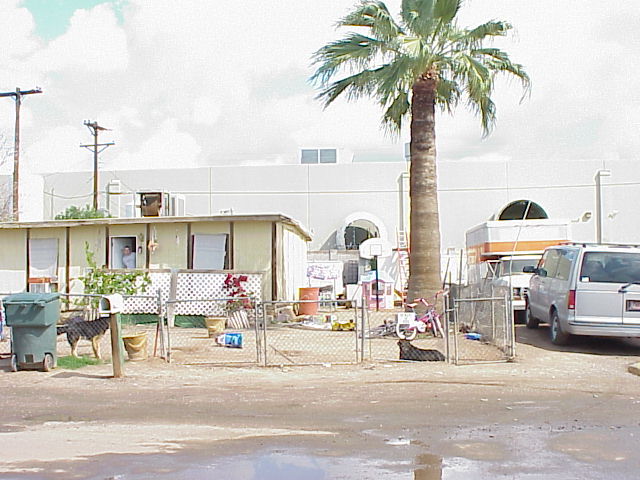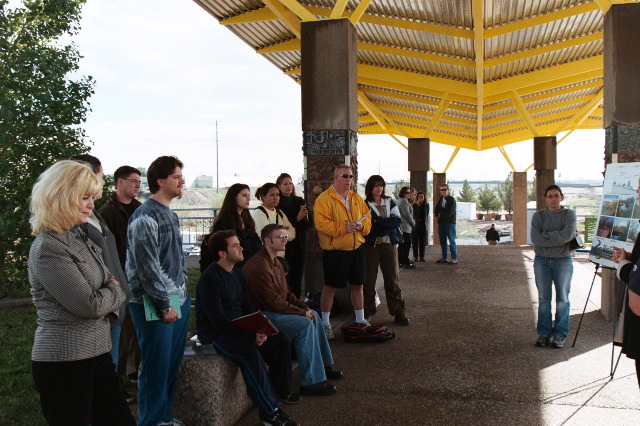 I
do not mean to say that south Phoenix is a cesspool of hazardous waste
materials. What I am trying to say is that south Phoenix faces many
environmental justice issues and one such issue is the Rio Salado Project.
I
do not mean to say that south Phoenix is a cesspool of hazardous waste
materials. What I am trying to say is that south Phoenix faces many
environmental justice issues and one such issue is the Rio Salado Project.Environmental Justice Issues in South Phoenix and The Rio Salado Project
According to a study by faculty
at Arizona State University ‘Environmental Justice’ can be defined as the term
that describes any question regarding spatial and procedural equity across a
wide range of technological hazards. In layman’s terms, it means any questions
regarding inequities based on race, ethnicity, or socioeconomic status and the
distribution of toxic hazards across a specific area. This study found a
correlation between the presence of a Toxic Release Inventory, or TRI, facility
and racial/ethnic composition of the area where it was located. There is a
higher incidence of African-Americans and Latinos located near these facilities
than other groups who live in Phoenix. This study also found that southern and central
Phoenix is a hotbed of hazardous waste management sites, abandoned landfills,
and TRI facilities. Another problem is zoning and land use policies that put
residents in close proximity to these facilities. Driving around south Phoenix
with a list of these facilities it is clearly evident with homes across the
street from facilities that emit hazardous toxins. The picture to the left
is a good example of this.
 I
do not mean to say that south Phoenix is a cesspool of hazardous waste
materials. What I am trying to say is that south Phoenix faces many
environmental justice issues and one such issue is the Rio Salado Project.
I
do not mean to say that south Phoenix is a cesspool of hazardous waste
materials. What I am trying to say is that south Phoenix faces many
environmental justice issues and one such issue is the Rio Salado Project.
The Rio Salado Project, pictured
below, is a plan to restore the dry Salt River bed that runs through south
Phoenix. It is a plan that hopes to restore an ugly piece of
the city’s landscape and trigger new development orientated toward the river.
It hopes to do this by restoring some of the native habitat wildlife, and it
also provides outdoor recreational
activities like hiking, jogging and picnicking. Restoring the native habitat
and wildlife after years of neglect and abuse raises many environmental issues
as well.
For years the Salt River has been the dumping ground for Phoenix’s waste. According to Danielle Totty, of the Rio Salado Project, there are currently nine landfills that call the riverbed their home. One is a Superfund site, six are closed, and two are still accepting. The restoration of a dry river ecosystem requires adding water. The effects of water saturation and the presence of landfills, active or not, can have devastating effects including groundwater contamination. Steve Brittle of Don’t Waste Arizona, provides many examples of such environmental issues that still need considering before the project should continue. Some of these issues, beside water contamination, include the introduction of birds, which can be a problem with the project’s close proximity to the airport. Another problem is the water quality levels allowed in the Rio Salado Project well exceed those allowed at the Motorola 52nd St. Superfund Site, which is ludicrous considering these levels are not even considered safe.
There are a number of environmental issues that still need consideration regarding the Rio Salado. One example of this is that the project stops at 19th Avenue. This does not mean that the water will just stop flowing; it will in fact continue to flow well past 19th Avenue during monsoon season. When asked what will happen to the area past 19th Avenue Danielle’s response was “We hope for more funding in the future.” It looks like they have a lot to consider and Steve Brittle hopes to delay the project enough to give them the time to do just that. Good Luck!
Kurt DeRuyter